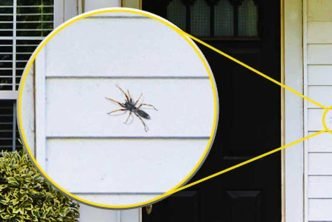Assisted living communities provide a valuable service for seniors who require assistance with daily activities while maintaining independence. Safety is a top priority in these communities. Whether you are considering assisted living or a loved one, it is essential to understand the measures taken to ensure a safe and secure living environment. In this blog post, Lisa Winters, New York City advocate, shares some key strategies and practices to help guarantee safety in assisted living communities.
Table of Contents
Staff Training And Qualifications
One of the fundamental aspects of ensuring safety in assisted living communities is having well-trained and qualified staff. The staff should receive thorough training in emergency preparedness, first aid, and CPR. Regular training sessions should be conducted to keep the staff updated on best practices and safety protocols. Verifying that staff members have undergone background checks and have the necessary certifications and licenses to perform their roles effectively is also essential.
Emergency Response Systems
Effective emergency response systems are crucial for the safety of residents in assisted living communities. These systems typically include emergency call buttons or pull cords in residents’ rooms and common areas. When activated, these devices immediately alert the staff, who can respond promptly to the resident’s needs. These systems should be regularly tested and maintained to ensure their functionality.
Fall Prevention Measures
Falls are a significant concern for seniors, and implementing fall prevention measures is essential in assisted living communities. These measures may include installing handrails in hallways, common areas, bathrooms, and slip-resistant flooring. Regular safety inspections should be conducted to identify and address potential hazards. Additionally, encouraging residents to engage in exercise programs that promote strength and balance can significantly reduce the risk of falls.
Medication Management
Proper medication management is critical in ensuring the safety and well-being of residents in assisted living communities. Trained staff should oversee medication administration, ensuring medications are taken as prescribed and at the correct times. Medication storage areas should be secure and expired or unused medications should be disposed of properly. Regular medication reviews and consultations with healthcare professionals can help prevent adverse drug interactions and ensure that residents receive appropriate medications.
Security And Access Control
Maintaining a secure environment is vital to the safety of residents in assisted living communities. Security measures such as surveillance cameras, secured entrances, and access control systems can help prevent unauthorized individuals from entering the premises. Staff members should be trained to recognize and report any suspicious activity. Regular security audits should be conducted to identify and address potential vulnerabilities.
Regular Safety Assessments
Regular safety assessments are crucial to identify potential risks and hazards in assisted living communities. These assessments should cover fire safety, emergency evacuation plans, building infrastructure, and resident safety education. By proactively addressing any safety concerns, communities can continuously improve their safety protocols and ensure the well-being of their residents.
Resident And Family Engagement
Engaging residents and their families in safety practices effectively enhances safety in assisted living communities. Regular communication and open dialogue between staff, residents, and their families can help identify any potential safety issues and address them promptly. Community-wide safety education programs and workshops can empower residents with knowledge and strategies to stay safe.
Regular Maintenance And Safety Inspections
Regular maintenance and safety inspections are crucial to identify and address potential hazards in assisted living communities. This includes routine checks of electrical systems, plumbing, heating and cooling systems, and fire safety equipment. Any necessary repairs or upgrades should be promptly addressed to ensure the safety and comfort of residents. Regular inspections of common areas, walkways, and outdoor spaces should also be conducted to identify and fix potential tripping hazards or other safety concerns.
Conclusion
Lisa Winters, New York City advocate, says ensuring safety in assisted living communities involves a combination of well-trained staff, emergency response systems, fall prevention measures, medication management, security measures, regular safety assessments, resident and family engagement, and regular maintenance and safety inspections. By prioritizing safety and implementing these strategies, assisted living communities can create an environment that promotes the well-being and security of their residents. When selecting an assisted living community, one must inquire about their safety practices and protocols to make an informed decision for yourself or your loved ones.





